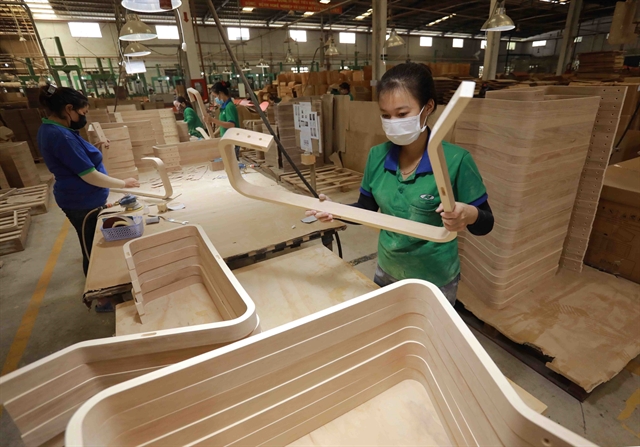 Life & Style
Life & Style

Physical activity is an important part of maintaining overall health. Leading a stressful work life usually only leaves us with weekends to engage in physical activities.
However, trying to compensate for our sedentary lifestyle during week days may take a toll on sports injuries.
 |
| Dr. Cao Mạnh Liệu. — Photo courtesy of Hanoi French Hospital |
By Dr. Cao Mạnh Liệu*
Physical activity is an important part of maintaining overall health. Leading a stressful work life usually only leaves us with weekends to engage in physical activities.
However, trying to compensate for our sedentary lifestyle during week days may take a toll on sports injuries.
Most common sports injuries
Sprains and strains are the two most common sports injuries. A sprain refers to an overstretching or tear in one of the ligaments. Ligaments are short bands made of connective tissue that connects two bones or cartilages or holds together a joint.
Strains are also called “pulled muscles”. If you overuse or overstretch a muscle, you can cause tears in the muscle fibres or muscle tendons.
Which parts of the body are affected?
For “normal” sports activities such as running, biking, playing tennis or squash, group ball games, golf and exercising in the gym, the most commonly affected areas are the feet, ankles, knees, legs, lower back, elbows and shoulder.
Can I prevent sports injuries?
Sometimes, preventing common sports injuries is beyond our control, but many are indeed preventable. Warm up before beginning exercise, which will increase the blood flow to your muscles and make them more flexible, and stretch them afterwards. Resting between workouts gives the body time to recover and repair. And start any new activity slowly, gradually increasing strength, flexibility and endurance. Most importantly, listen to your body and stop if you experienceany pain, discomfort and stress.
How do I recognise and treat sports injuries?
Muscle strains:
Commonly affected muscles include the hamstrings, groin, quadriceps, calve muscles and muscles in your lower back and shoulders. Symptoms include pain, swelling and difficulties to use the affected muscle. Minor strains will get better in a few days if you rest your muscles. Apply ice as soon as the injury happens and use elastic bandages for compression.Elevate the affected part as often as possible. Over-the-counter pain killers can relieve the pain of minor strains. If they don’t, it is best to see a doctor.
Sprains:
The most common of all is an ankle sprain. It usually occurs when the foot turns inwards and overstretches or tears the ligaments on the outside of your ankle. Symptoms include pain, tenderness above the ankle and weakness.
Unlike with strains, it is important to continue exercising during a sprain to prevent loss of flexibility and strength. Ask your doctor or physiotherapist about exercises most suitable to prevent re-injury. Ankle sprains should preferably be seen by a doctor to ensure that the ligament is not torn, and the bones have not separated.
Knee injuries:
ACL tear
The anterior cruciate ligament (ACL) helps hold the knee joint together and provides stability. You may tear your ACL by landing on the foot the wrong way, changing direction quickly or coming to a halt abruptly (as in the squash court). Symptoms include pain, swelling,loss of range of motion and difficulty in walking. A torn ACL usually requires surgical reconstruction through arthroscopy followed by extensive physiotherapy. If surgery is not an option, physiotherapy and braces may bring some relief but will not resolve the problem.
MCL tear
The medial collateral ligament (MCL) connects the upper leg bone (femur) to the larger bone of the lower leg (tibia). It is located on the inner side of the knee. A tear to the MCL usually occurs when the knee is pushed sideways too much while making a move or when hitting the knee. Symptoms include pain, swelling and instability in the joint. A torn MCL can be treated with ice, braces and physiotherapy. If the injury to the knee joint involves other structures, such as other ligaments or the meniscus, you may need a surgery.
Patellofemoral syndrome
A patellofemoral syndrome can result from exercises such as running, volleyball and basketball. Repetitive movement of the patella (kneecap) against the femur (thigh bone) can damage the tissue underneath. Symptoms are commonly limited to pain, which can take a while to subside. As with sprains, it is important to continue exercising, preferably under the guidance of a physiotherapist.
Tennis elbow (lateral epicondylitis)
Tennis elbowis a painful condition caused by overuse of the elbows. Repetitive movements during golf, tennis, squash or badminton swings can cause an inflammation of the tendons that join the forearm muscles on the outside of the elbow. Symptoms are commonly pain and tenderness on the outside of the elbow which improve with rest. A combined treatment of rest, pain killers and physiotherapy usually resolves the issue.
When should you seek medical attention?
If you suspect something is wrong or the symptoms do not improve after a couple of days, you should see a doctor.
Seek medical attention as soon as possible if you experience any of the following symptoms:
* Dr. Cao Mạnh Liệu is an internationally trained orthopaedic surgeon at the Hanoi French Hospital with long-term expertise in the treatment of conditions and injuries of the bones, joints and muscles.
If you have any questions or want to book an appointment with our doctors, please contact us at 84-24.3577.1100, visit www.hfh.com.vn, or email us at contact@hfh.com.vn. Address: 1, Phương Mai, Đống Đa, Hà Nội.









